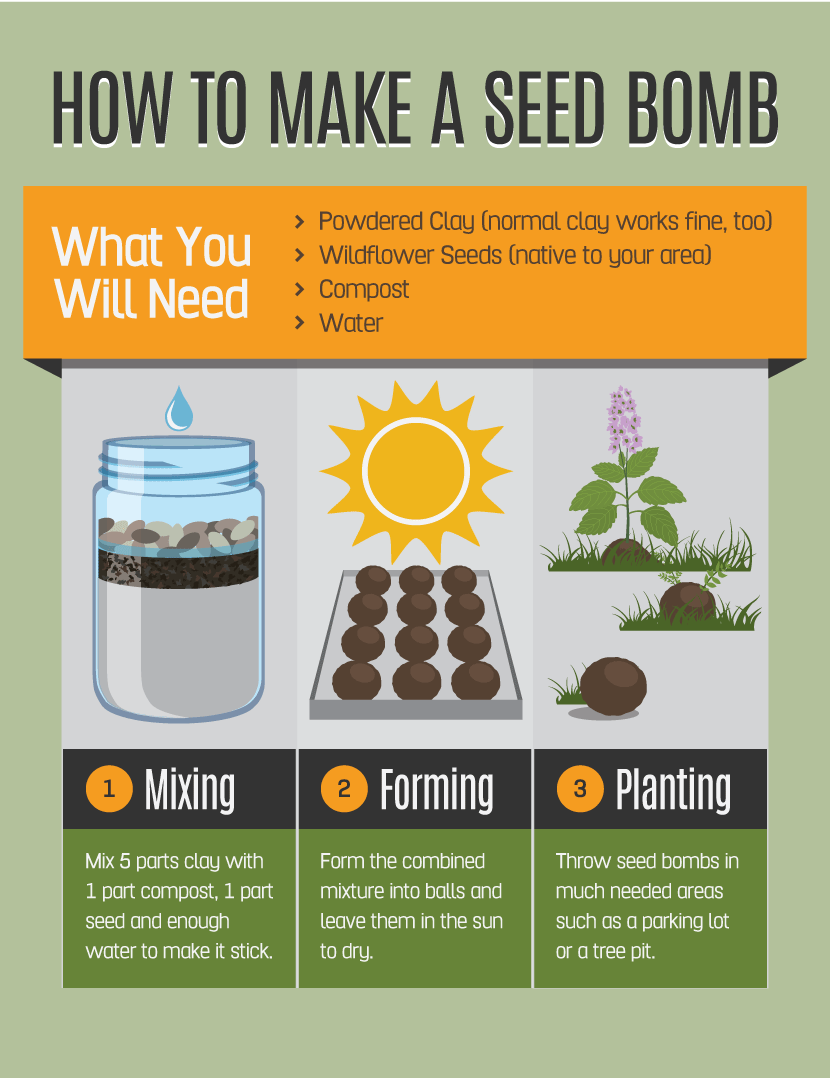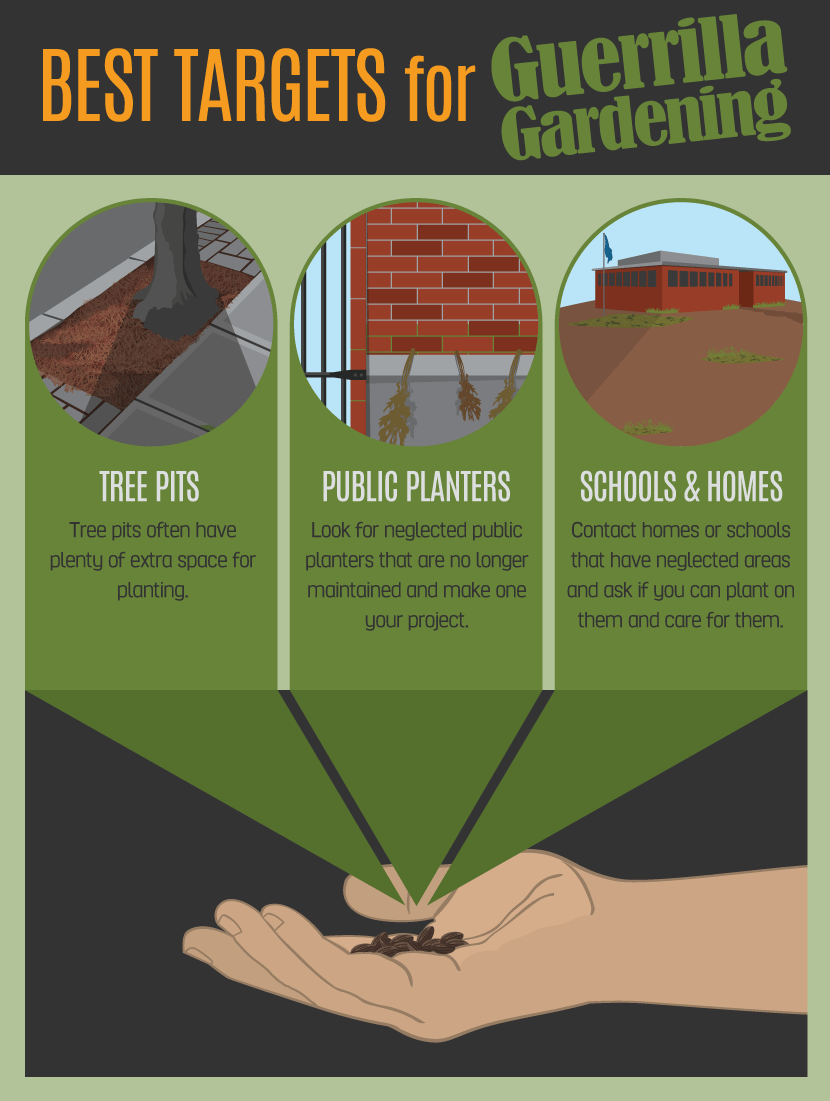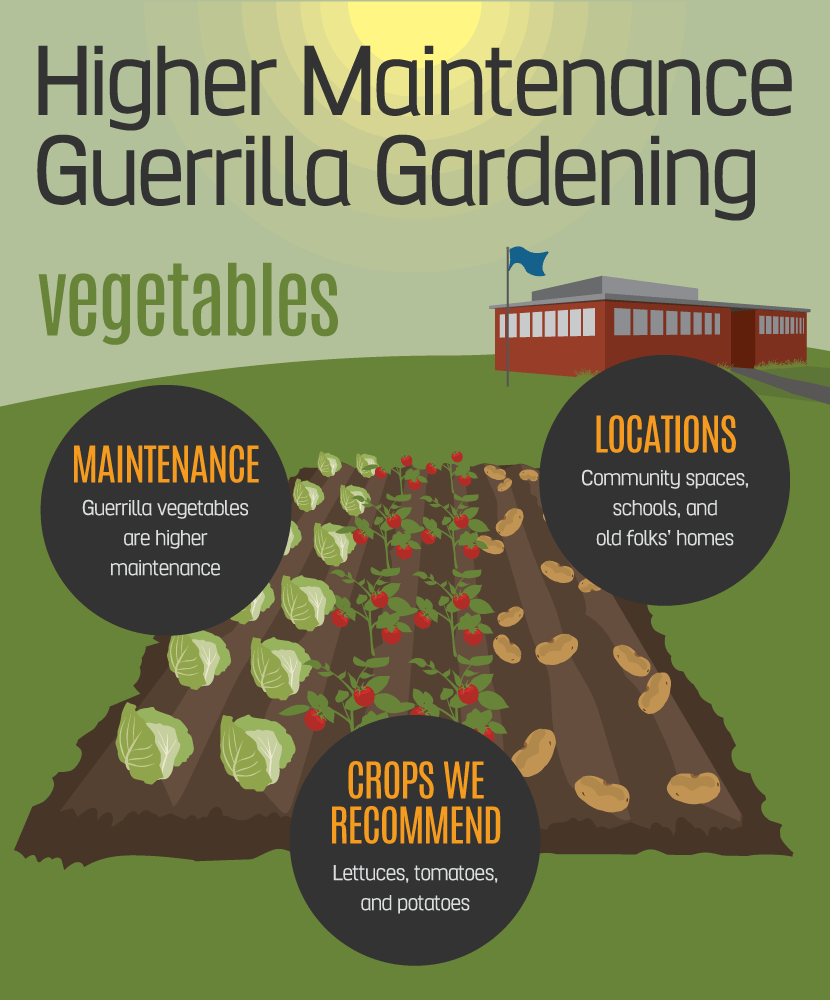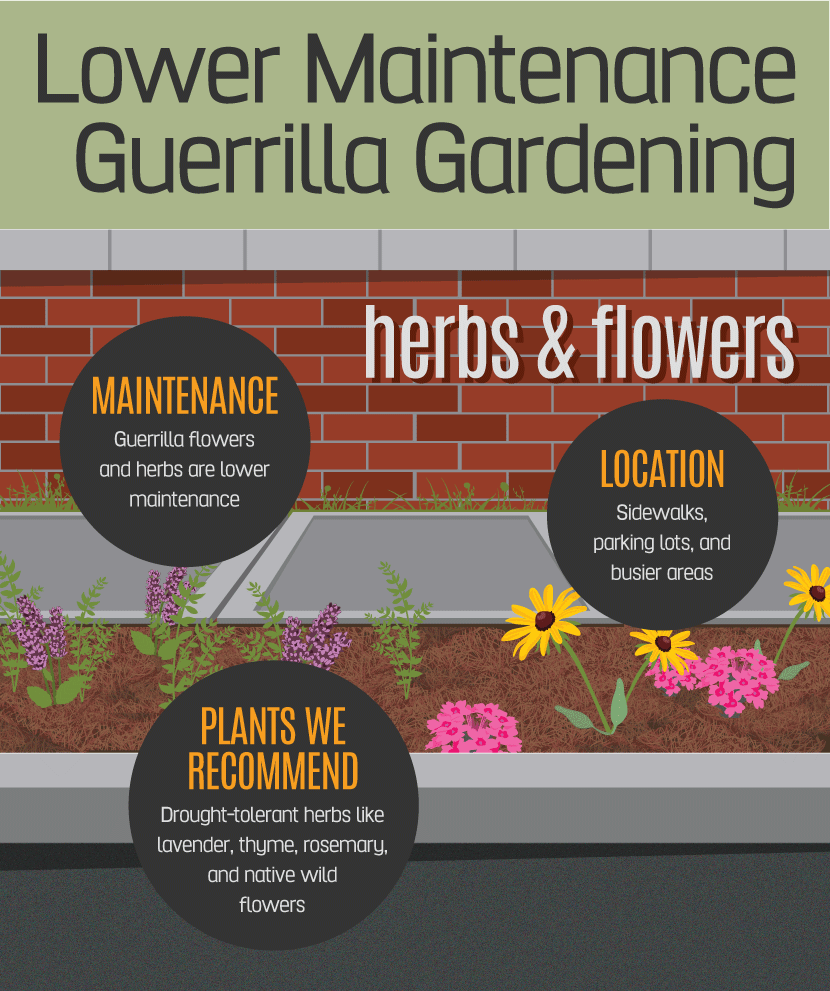Guerrilla Gardening
If you have an urge to garden but no patch of soil to call your own, consider joining the ranks of guerrilla gardeners. Guerrilla gardening is the act of taking on a patch of neglected, bedraggled public land to make it beautiful using flowers, vegetables, and fruits. Flat-dwellers, house sharers, and students are all unlikely to be able to exercise the desire to garden in a traditional way, but if you look beyond the garden gate, you can find a wealth of opportunities.
People start guerrilla gardening for many different reasons. For some, it is just about satisfying that gardening itch, which is so hard to scratch in an urban setting. For others, it is about improving their surroundings: if you stand at a bus stop staring at an abandoned planter every morning, you might eventually be moved to plant something in it and brighten up your journey to work. For others still, it is about community and finding like-minded people to garden with. Finally, a large number of guerrilla gardeners see it as a political act and plant edible plants as a statement about food security, to increase the amount of locally grown food, and to show others how easily it can be done. Of course, this is all about public service, and we would only recommend doing this in a way that pleases the community, and does not create a problem with anyone.

Whatever your personal reasons for guerrilla gardening are, your first step is to find a place to do it. Once you open your eyes and start looking around your neighborhood, you will see all sorts of unused possible planting spaces. The beauty of guerrilla gardening is that once you have identified your spot and chosen a few plants, you have no further barriers to overcome: stir up your courage, grab a few basic tools, and you are off. You do not need to seek permission.
This brings us to another of the joys of guerrilla gardening: its subversive nature. Gardening has never been the edgiest of pastimes, but guerrilla gardening genuinely is. You are gardening in the public realm, a space usually reserved for officials and government employees, and it feels downright naughty. Many prefer to kick off their guerrilla gardening exploits under cover of darkness when they are less likely to be spotted and questioned by anyone in authority. Although this perhaps adds to the thrill, it is even better to be bold about it. Once you’ve got a couple of night raids under your belt, come out in the daytime and be proud. Talk to interested passersby, and you may find allies or even future guerrilla gardening companions. Local shopkeepers are particularly useful, if you can get them on your side. It will be in their interest for their neighborhood to look smarter and prettier, and they may offer sponsorship in the form of tools, plants, or even just a cup of tea on a cold day. By talking and engaging with them, you will at the very least start to build up a little support for your work should it ever be threatened by the dead hand of officialdom.

Another option – should you have the urge to improve your neighborhood environment horticulturally but waver at setting out a high-street planter – is to approach schools, old people’s homes, or even police stations and community centers to see what beds they have lying fallow. Beds are often built into the fabric of such buildings and then left without attention or a gardener. They are ripe to be taken over. Here you will need to ask permission, but such spaces have the added benefit that the inhabitants of the building will likely become interested and involved in harvesting and eating any produce, sowing seeds, caring for the beds, or just in appreciating and encouraging your efforts.

Guerrilla Gardening Starter Kit
You will need a few things to get started wherever you decide to guerrilla garden. A trolley of some sort will always be handy because you will have tools and plants to carry to the site and rubbish to remove. If you are gardening next to a road or on a roundabout, consider wearing a high-visibility vest; you may want to garden hidden from prying eyes but not to the extent that you put yourself in mortal danger. The first job of taking on any neglected space will be tidying up, so take along rubbish bags, gloves, and litter pickers on your first visit. The soil will likely be in a poor, degraded state, but you will be amazed by how much a couple of inches of compost can improve the look of a bed and make it instantly look cared for. Take along a big bag of cheap soil improver, such as mushroom compost or well-rotted farmyard manure. For small beds, take hand tools such as a hand fork and a trowel; for larger beds, take a fork and spade. You will need to choose and source a few plants. Take along a watering can and as much water as you can carry in your trolley because you will likely be unable to find a source once you are out and about.
Maintenance or the lack of it will decide whether your guerrilla gardening antics succeed or fail, so you should do a few things to set the odds in your favor. Only choose sites that are near your home or that you pass frequently. Any location that involves going out of your way to tend will quickly be forgotten or become too much trouble to maintain. Accept that your new gardening patch will require maintenance. It will look marvelous when first tidied up and planted, and the temptation will be great to brush your hands free of soil and walk away, satisfied that you have done a great job. But if left untended, your patch will very quickly become weedy and litter-filled again, and your newly planted plants will die. Mentally book yourself in for a maintenance session every week, and put it in the diary to make sure it happens.

Guerrilla gardening is fun, community-spirited, and hugely satisfying, particularly if you see it as a long-term task. Set about it right and you will bring color and beauty to your neighborhood’s most forlorn patches for many years to come.
Embed the article on your site

